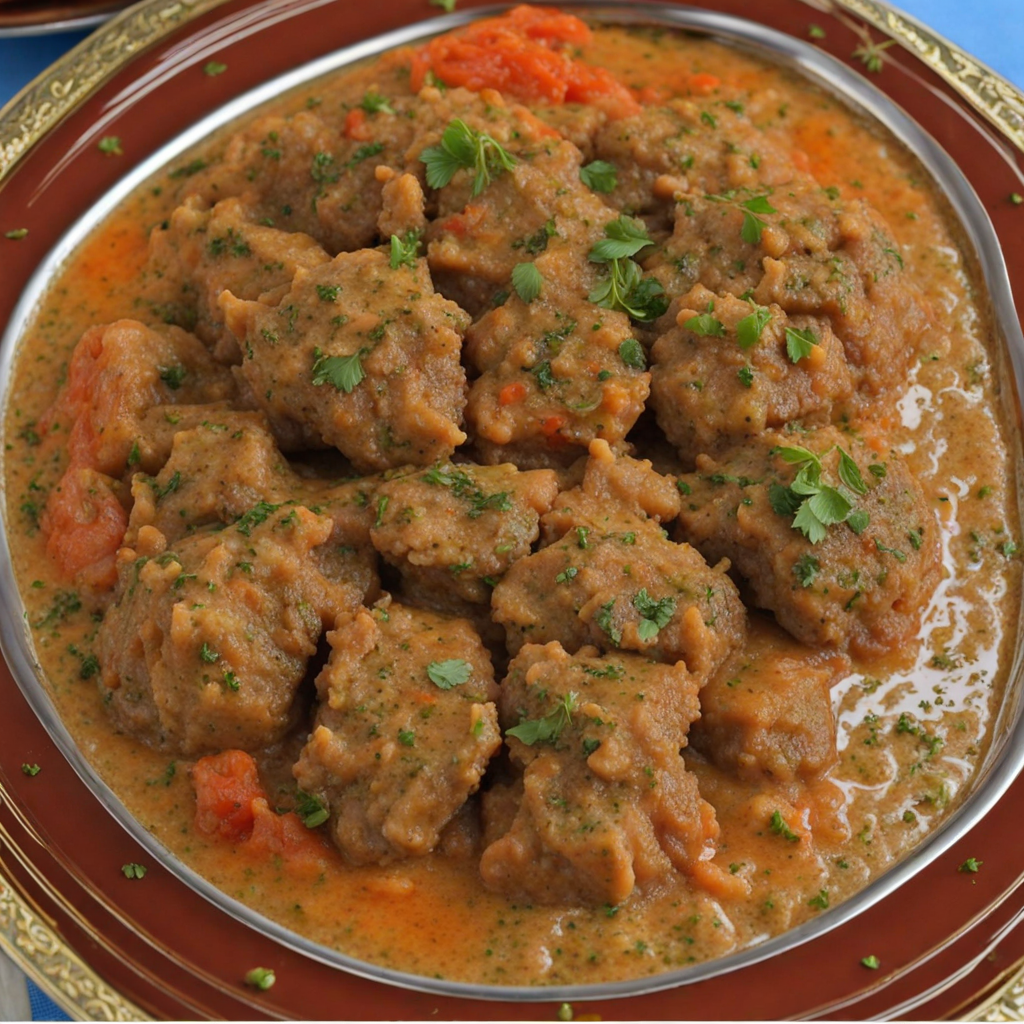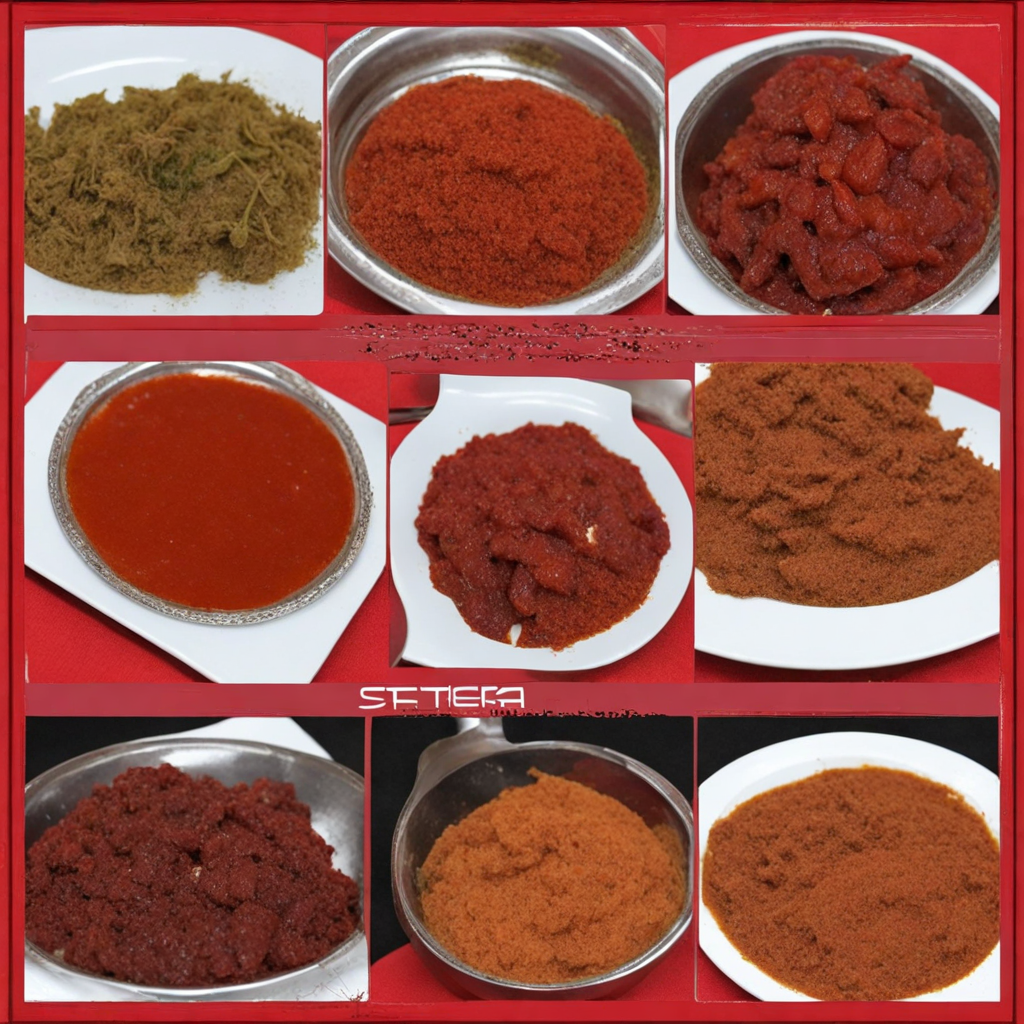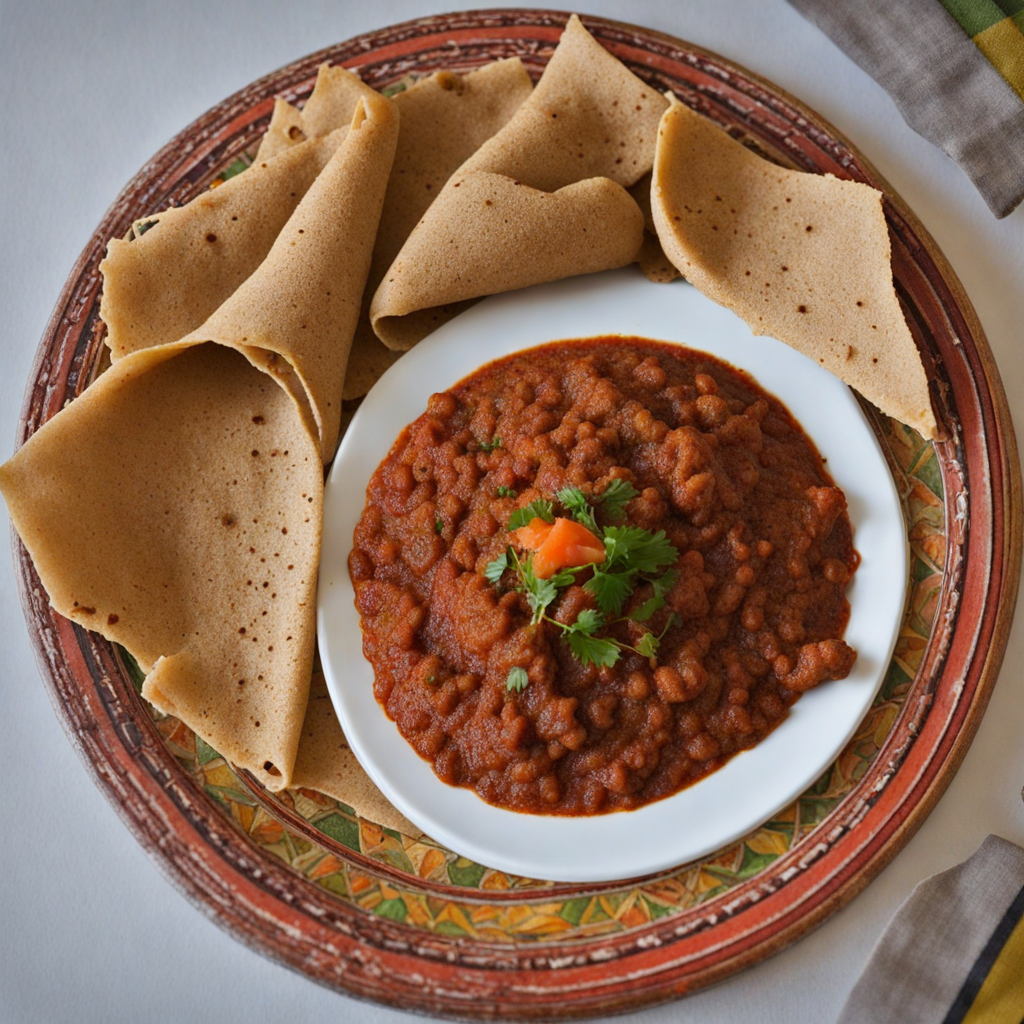Asa Kitfo
Asa Kitfo is a delightful Eritrean dish that showcases the rich culinary traditions of the region, with a focus on fresh, high-quality ingredients. At its core, Asa Kitfo features raw or lightly cooked fish, typically a firm white fish like tilapia, which is marinated in a vibrant mixture of spices and herbs. The fish is delicately seasoned with a blend of berbere—an essential Eritrean spice mix—and niter kibbeh, a spiced clarified butter that adds depth and richness. This combination not only enhances the natural flavors of the fish but also provides a unique, aromatic experience that captivates the senses. The dish is often served with a side of injera, a traditional Ethiopian flatbread that acts as both a plate and a utensil. The slightly sour and spongy texture of injera contrasts beautifully with the tender fish, making each bite a harmonious blend of flavors and textures. Asa Kitfo can also be accompanied by a variety of salads and vegetables, adding freshness and crunch to the meal. This balance of components creates a diverse tasting experience that is both satisfying and refreshing, perfect for those looking to explore new cuisine. Asa Kitfo is not just about taste; it is also a dish steeped in culture and tradition. Often enjoyed during special occasions or gatherings, it embodies the communal spirit of Eritrean dining. The preparation of Asa Kitfo can be a collaborative effort, inviting family and friends to partake in the cooking process. This aspect, combined with the vibrant flavors and textures, makes Asa Kitfo a dish that not only pleases the palate but also fosters connection and celebration among those who share it.
How It Became This Dish
The Culinary Journey of ኣሳ ኪትፎ (Asa Kitfo) from Eritrea #### Origins and Ingredients Asa Kitfo, a cherished dish in Eritrean cuisine, is a vibrant representation of the country's rich cultural tapestry and culinary heritage. The term "Asa" translates to "fish," while "Kitfo" refers to a preparation style that is primarily associated with minced or finely chopped meat, often beef in other contexts. However, in this case, it highlights the use of fresh fish, particularly varieties such as tilapia or Nile perch, which are abundant in the waters of the Red Sea and its surrounding lakes. The origins of Asa Kitfo can be traced back to the ancient fishing communities along Eritrea's coastline and the numerous rivers that flow through its highlands. The proximity to the Red Sea not only provided abundant fish but also created a unique culinary culture that celebrated the sea's bounty. Traditional methods of fishing and preservation, including smoking and drying, have played a significant role in shaping the flavors of this dish. The use of spices, particularly berbere (a blend of chili peppers, garlic, ginger, and various spices), enhances the flavor profile of Asa Kitfo. Berbere is a cornerstone of Eritrean and Ethiopian cuisine, reflecting the region's diverse agricultural practices and trade routes that have introduced various spices over centuries. Asa Kitfo often incorporates a touch of lemon juice, which adds a refreshing acidity that balances the richness of the fish. #### Cultural Significance Asa Kitfo is more than just a meal; it serves as a cultural symbol and a dish steeped in tradition. Within Eritrean society, food plays a crucial role in communal gatherings, celebrations, and religious events. Asa Kitfo is often served during special occasions such as weddings, religious holidays, and family reunions, where the act of sharing a meal becomes a means of fostering connections and reinforcing social bonds. The dish is typically enjoyed with injera, a sourdough flatbread made from teff flour, which is a staple food across the Horn of Africa. Injera acts as both a plate and a utensil, allowing diners to scoop up the fish and other accompaniments. The tactile nature of eating with one's hands is an important aspect of Eritrean dining culture, promoting a sense of communal sharing and unity. In Eritrean communities, the preparation of Asa Kitfo can also be a ritualistic practice. Families often gather to prepare the dish together, passing down recipes and techniques from one generation to the next. This communal cooking experience fosters a sense of identity and pride in their heritage, allowing younger generations to connect with their roots. #### Development Over Time The evolution of Asa Kitfo is a reflection of broader historical and social changes in Eritrea. The country has experienced significant political and cultural shifts, particularly during the struggle for independence from Ethiopia in the late 20th century. This period of upheaval influenced not only the political landscape but also the culinary practices of the Eritrean people. During the Eritrean War of Independence (1961-1991), many traditional recipes were adapted due to scarcity of ingredients. The reliance on locally sourced fish and the improvisation of spices became essential in keeping the culinary traditions alive. Asa Kitfo, like many other dishes, became a symbol of resilience and adaptability, showcasing the ingenuity of Eritrean cooks. Post-independence, there has been a revival of interest in traditional foods, with a renewed emphasis on preserving culinary heritage. Asa Kitfo has found its place in modern Eritrean cuisine, appearing in both traditional and contemporary settings. Restaurants across Eritrea and in diaspora communities serve Asa Kitfo, often presenting it alongside various side dishes that highlight the diversity of the region’s flavors. In recent years, Asa Kitfo has also gained recognition beyond Eritrea's borders. Food enthusiasts and culinary historians have begun to explore the intricate connections between Eritrean and Ethiopian cuisines. Asa Kitfo is often compared to dishes like kitfo in Ethiopian cuisine, which also celebrates raw meat preparations. This cross-cultural dialogue highlights the shared history and culinary traditions of the Horn of Africa. #### Modern Interpretations and Globalization As globalization continues to influence culinary practices, Asa Kitfo has adapted to contemporary tastes while maintaining its traditional essence. Chefs are experimenting with innovative presentations and fusion elements, incorporating international ingredients and techniques. This evolution reflects the dynamic nature of food culture, where tradition and modernity coexist and inform one another. In Eritrean diaspora communities, Asa Kitfo serves as a means of cultural preservation and identity. It is often featured at cultural festivals, community events, and gatherings, allowing Eritreans to celebrate their heritage while introducing their cuisine to a broader audience. The dish has become a point of pride for many, serving as a reminder of their roots and the rich culinary history that accompanies them. Additionally, social media and food blogs have played a significant role in popularizing Asa Kitfo and other Eritrean dishes. Through platforms like Instagram and TikTok, home cooks and chefs share their interpretations of traditional recipes, often incorporating personal stories and family memories that resonate with audiences worldwide. This digital storytelling fosters a sense of community and connection among Eritreans, both at home and abroad. #### Conclusion Asa Kitfo stands as a testament to Eritrea's rich culinary heritage, embodying the country's history, culture, and resilience. From its origins along the Red Sea to its modern interpretations in global culinary landscapes, Asa Kitfo reflects the adaptability and creativity of the Eritrean people. As the dish continues to evolve and gain recognition, it remains a cherished symbol of identity, community, and the enduring power of food to bring people together. Through each bite of Asa Kitfo, one can taste the stories, struggles, and triumphs of a people deeply connected to their land and traditions.
You may like
Discover local flavors from Eritrea







